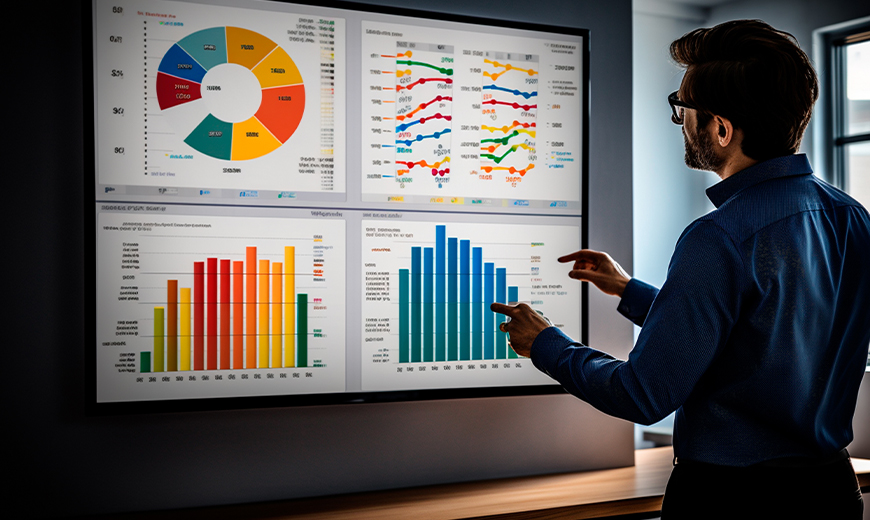The Power of Predictive Analysis
INTRODUCTION
Businesses and organizations are continuously looking for innovative methods to acquire a competitive edge in today’s data-driven environment. Predictive analysis is one of the most effective methods at their disposal. With the use of this cutting-edge method, strategic planning and the ability to predict future trends and outcomes are made possible.
What is predictive analysis?
Predictive analysis uses previous data to uncover significant patterns, correlations, and trends to produce accurate forecasts about the future. By applying cutting-edge statistical methods, machine learning, and artificial intelligence to find hidden links in data sets, it goes beyond conventional analytics. The predictive analysis looks at historical data points and results related to finding patterns that can inform choices and improve tactics.
The process of predictive Analysis
The predictive analysis entails several connected processes, each of which adds to the forecasts’ overall accuracy and dependability.
Data collection
Getting pertinent information from multiple sources is the first step in the process. Historical records, consumer behavior, market trends, and other information may be included in this data. The quantity and quality of data are extremely important for the success of predictive analysis.
Data preprocessing
Raw data is frequently disorganized and lacking. To make sure the data is accurate and consistent, data processing entails cleaning, converting, and structuring the data. This stage is essential to the success of the predictive analysis’s future analytical steps.
Featuring Selection and Engineering
For creating predictions, not all data properties are equally significant. The process of feature selection and engineering includes selecting the most pertinent variables and developing fresh ones that can improve the model’s capacity for prediction.
Model Selection
The crucial step is picking the appropriate forecasting model. Different algorithms, including linear regression, decision trees, neural networks, and more, might be used, depending on the characteristics of the problem and the data. Each model has advantages and disadvantages, so great thought must go into the decision.
Training the Model
In this step, the selected prediction model is trained using historical data. The model gains knowledge from the connections between input variables and corresponding outcomes, allowing it to predict outcomes for previously unobserved data.
Validation and testing
Utilizing validation and testing data sets, the model’s performance is evaluated after training. By doing this, the model’s predictions are made with more accuracy and dependability.
Deployment and prediction
When the model is deemed adequate, it can be used to produce forecasts based on fresh data. The model predicts upcoming events, results, or trends using the knowledge gathered from prior data.
Applications across Industry
Numerous sectors have found a use for predictive analysis, which has transformed how decisions are made and plans are created.
Business and Marketing
Businesses use predictive analysis to forecast demand for goods and services, study consumer behavior, and improve marketing strategies. Companies can adjust their offer to satisfy certain market needs by detecting trends in the historical preferences of their customers.
Finance
Predictive analysis is used in the financial sector to evaluate credit risk, spot fraud, and make investment decisions. Financial organizations can forecast market swings and optimize investment portfolios by examining historical data and market trends.
Healthcare
In the healthcare industry, predictive analysis is essential for predicting disease outbreaks, patient diagnosis, and treatment planning. Medical personnel can foresee health hazards and decide on patient care based on analysis of patient data.
Manufacturing
Predictive analysis is used in manufacturing to streamline the production process, foresee equipment breakdowns, and save downtime. This proactive strategy lowers operating expenses and boosts general effectiveness.
Transportation and Logistics
Predictive analysis is used to streamline supply chains, anticipate vehicle repair requirements, and enhance route planning. Better customer service and a more effective transportation system result from this.
Conclusion
In the age of data-driven decision-making, predictive analysis has become a tool that can change the game. Organizations can acquire important insights into upcoming patterns and events by utilizing historical data, sophisticated algorithms, and machine learning. Predictive analysis is revolutionizing industries by enabling informed decision-making, optimizing strategies, and staying ahead of the curve in fields ranging from business and marketing to healthcare and finance. The potential of predictive analysis is only expected to increase as technology develops, ushering in a new era of data-driven innovation and success.


